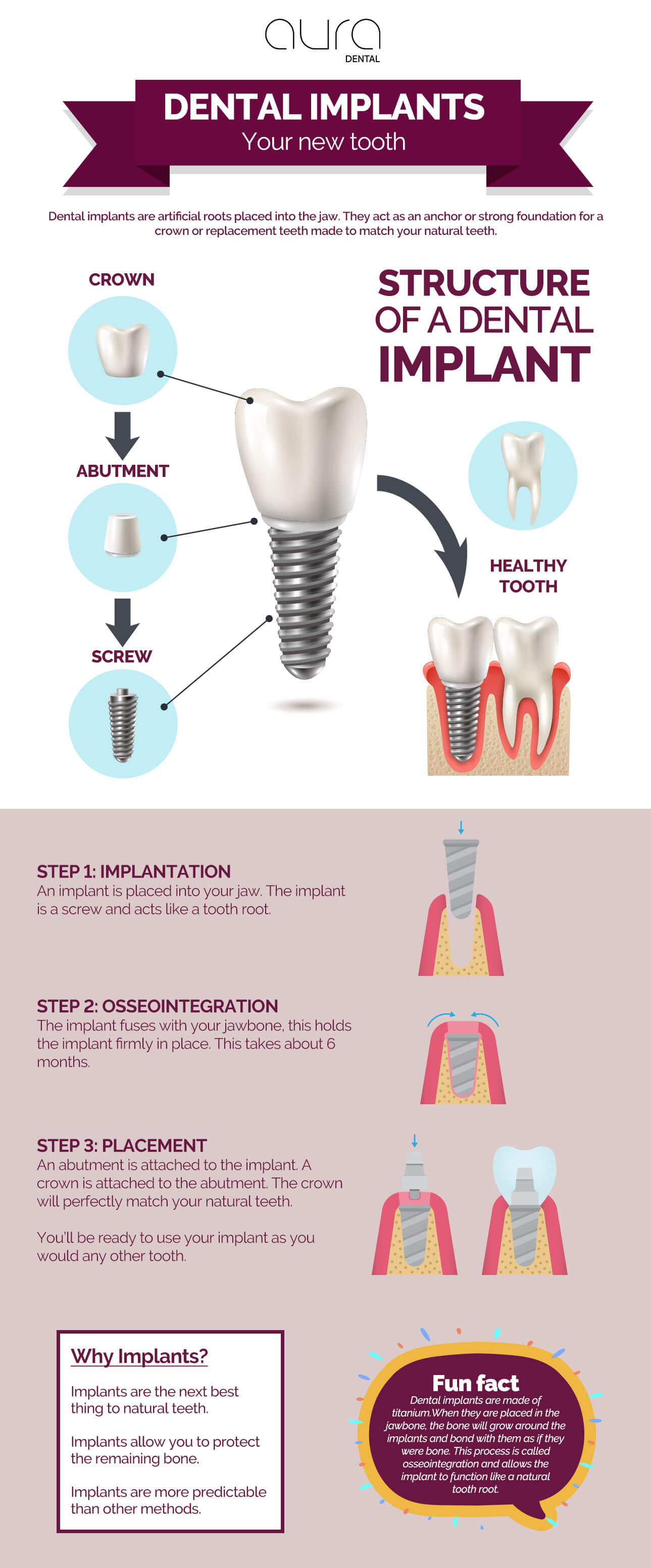
An implant-supported bridge is similar to a regular dental bridge, but it is supported by implants and not by natural teeth. In most cases, when an implant-supported bridge is used, one implant is placed in the jawbone for each two-missing tooth. Then the crowns are connected to each other to form one piece.
An implant-supported bridge is used when more than one tooth is missing and can be used to replace a whole arch of missing teeth. It also may be used when your dentist is concerned that you might put too much pressure on individual implants that are not connected to each other. For example, clenching or grinding your teeth can put a lot of pressure on individual implants. This can increase the chances that they will loosen from the bone and fail. An implant-supported bridge reduces the pressure on the individual implants in the bone, and spreads it across the entire bridge.
If the implants will be placed next to natural teeth, the natural teeth and surrounding gums must be in good health. If you don't have enough bone to place and support the dental implants, the supporting bone can be built up using bone augmentation or grafting before the actual implant procedure begins.






























